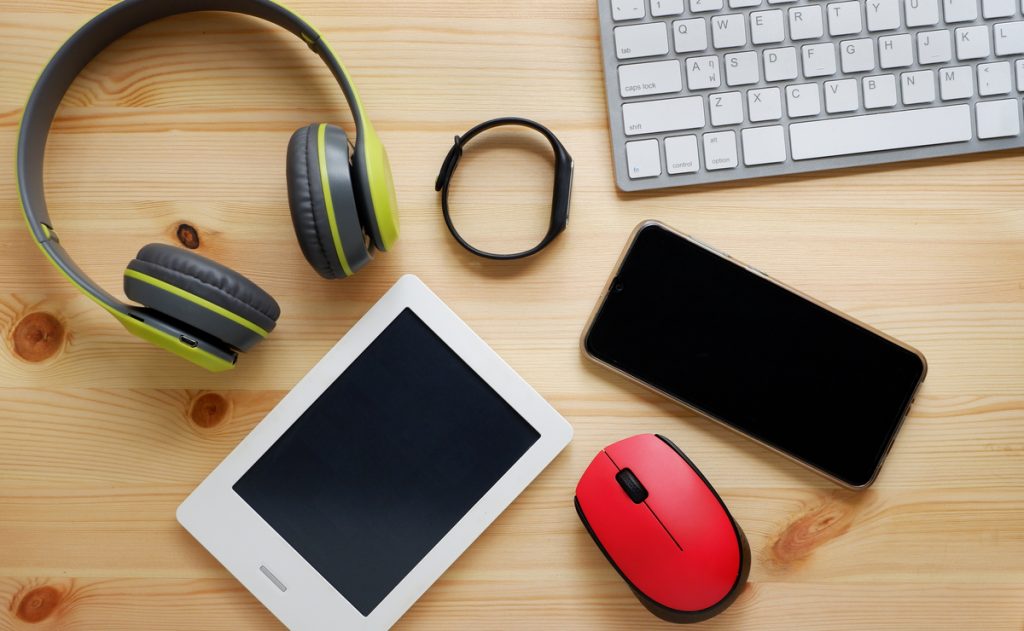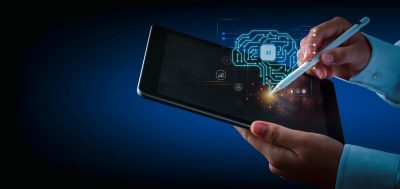Everyone knows that Bluetooth is a short-range wireless technology standard that utilizes Ultra High Frequency (UHF) radio waves in the Industrial, Scientific, and Medical (ISM) frequency bands ranging from 2.402 GHz to 2.48 GHz.
Bluetooth helps build personal area networks and allows to exchange data between nearby devices. It was invented as an alternative to cables. Before introducing Bluetooth, there was no existence of wireless communication for electronic gadgets.
A drawback of using classic Bluetooth is that it drains the device’s battery. If the Bluetooth connection is kept on all day, the device for sure will notice additional power consumption. This can turn problematic for devices with limited power, especially those working on Internet-of-Things (IoT) or edge computing.
As a result, Bluetooth Low Energy (BLE) was introduced to fix this problem.
One of the most significant revisions that hit the industry in 2011 is Bluetooth 4.0 or BLE. How do these wireless network technologies fit into the IoT world? Let’s have a sneak-peek…….
What is BLE?
As mentioned earlier, BLE or Bluetooth 4.0 hit the industry in 2011. The key difference is BLE’s low energy consumption capability when talking about BLE vs. Bluetooth. With low-energy consumption, applications can work on a small battery for a more extended period. However, this is not for talking on the phone; it is important for applications that periodically exchange a small amount of data. So, BLE devices put themselves into sleep mode to save energy to remain asleep in between connections when not in use.
Following are a few examples of devices that use BLE –
- Public transportation apps
- Blood pressure monitoring
- Geography-based, targeted promotions
- Fitbit devices
- IoT applications
- Industrial monitoring sensors
Its working is not as fast as Bluetooth and hence is not favorable for transferring large files. Because of BLE, many small IoT devices, such as sensors and tags, can communicate quickly, irrespective of larger batteries.
This wireless, low-power personal area network operates in the 2.4 GHz ISM band created with IoT applications in mind.
In the case of classic Bluetooth, the Bluetooth always remains on and carries continuous communication that often lasts hours.
Bluetooth can be applied to both customer and commercial use cases. Most customers access BLE and Bluetooth daily, devoid of even realizing it – and commercial industries are also starting to do the same.
How is BLE different from Bluetooth?
BLE was designed to save power. The following pointers illustrate how it is different from Bluetooth –
- Bluetooth offers continuous two-way communication while BLE communicates in only one direction and that too for a short period.
- The data transfer speed of Bluetooth is 1Mbps to 3Mbps, while BLE is limited to 125KBs-2Mbps.
- Bluetooth is voice capable, while BLE is not.
- Bluetooth connection comes with a latency of 100ms, while BLE connections have a latency of 6ms. Thus, it means lower the latency, better the connection.
- Bluetooth works on 1W of power while BLE uses 0.01 – 0.5W of power. Thus, BLE devices use 100 times less energy.
Top smartphones today support both classic Bluetooth and BLE since 2012. BLE technology was first introduced in iPhone 4 and Android 4.3. Many of the Windows, Linux, and Mac devices support BLE.
Architecture of a BLE device
Three key software levels in the architecture of a BLE device are as follow –
- Controller
- Application
- Host
Two significant modes in BLE are –
- Connection – this mode connects the two devices enabling data transfer and a private communications channel (mainly outside the beacon devices).
- Broadcasting – mainly advertises its presence, and an observer device will discover these broadcasters by scanning the surroundings.
How does BLE contribute to IoT?
A new technological enhancement is on the horizon known as the IoT. This enhanced version of the technology will allow the connectivity of your everyday household devices such as kettles, washing machines, toasters, cookers, and others to one another and to the internet. Smartphones or tablets can control these devices.
Bluetooth Low Energy made many of the IoT sustainable applications (use of wireless headset to listen to your favorite song). It is due to the lower power of BLE that IoT devices can last for a longer time. For instance, it is more energy efficient than Wi-Fi, ZigBee, or Bluetooth. This shows that BLE can better support the connectivity of IoT devices for more extended periods than battery-powered devices.
Thus, BLE is present in a maximum of the wearables, tags, and other similar smart devices. BLE will gain more popularity as more and more devices start connecting.
BLE applications
BLE is never going to substitute Bluetooth. Although it has become the standard technology for several applications.
- Smart devices
BLE has turned out to be an effective way of communicating for many smart devices. It has proved exceptionally beneficial, especially for those smart devices with limited power and those who cannot support Bluetooth. Also, the presence of BLE in smartphones makes it easier to connect and compatible with all devices.
- Proximity marketing
Sending promotional messages to nearby smartphones using BLE can be a new way of marketing. This can be a quick way of doing location-based marketing. For instance, a retailer might send notifications to people as soon as they enter the premises to help them know the in-store products in detail.
- Indoor location tracking
GPS is effective at tracking location. However, it cannot be effectively used in small areas, such as inside buildings. BLE is a viable option for indoor tracking. It can be utilized to track a smartphone from room to room when paired with beacons.
- Asset management
BLE is helpful in asset management as it can be used to track physical items. Every item that needs to be followed is marked with a BLE tag. Beacons are then placed across the property to detect the unique ID of each tag.
BLE holds a compelling future for IoT devices
Even though Bluetooth classic exists, there is a much greater need for Bluetooth Low Energy today. Many popular applications and devices involved in the IoT use BLE for effective communication. BLE’s reduced power consumption property helps IoT devices last longer and work faster.
Hence, BLE is responsible for many of the wearables, tags, and other intelligent devices that we use today. It seems that BLE will only become more and more important in the future as more devices start connecting. The fast-evolving world needs technologies like BLE to function faster and stay impactful for longer. Hence, BLE is more powerful than Bluetooth.
To read more visit our latest whitepapers on Bluetooth Low Energy and other related technologies here.














